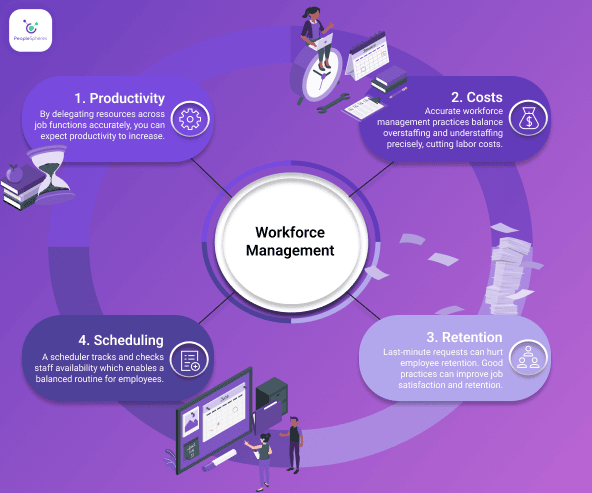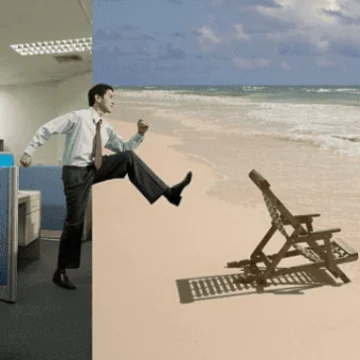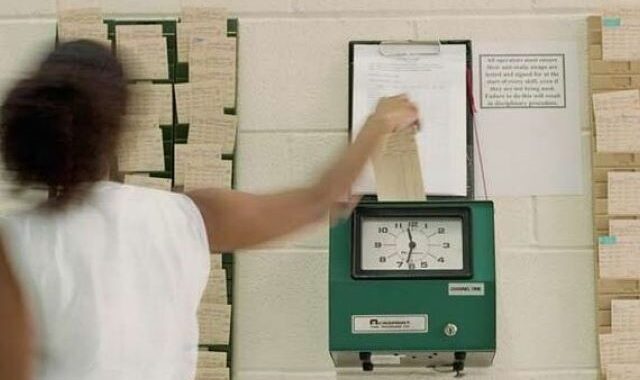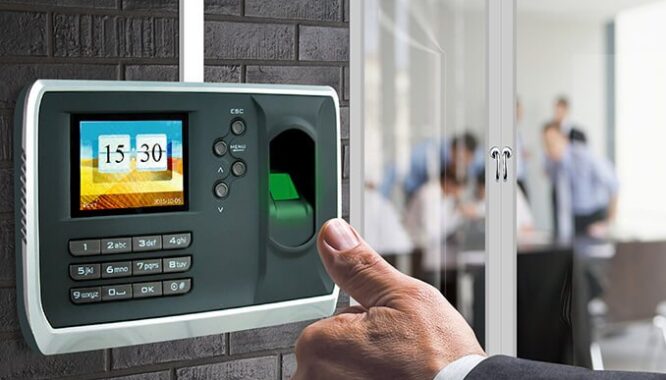-640x380.jpg)
Time and attendance management covers all practices that are associated with employee time and attendance. In essence, this is about tracking and monitoring employee hours, such as when they start work, when they end work, how long the breaks are, sick days, and time off. The tracking of employee hours can be done in many ways. For example through punching timecards, timesheets, employee scheduling, or by using a time and attendance software.
Time and attendance management is at the heart of workforce management. It ensures that employees with the proper skills are at the right place at the right time. Workforce management is essential to optimize organizational and employee productivity.
Related articles:
What Exactly is Workforce Management and Why is it Important?
Employee Experience: Everything You Need to Know
The Importance of Time and Attendance
Time and attendance is a part of workforce management which is used across many HR functions, including human resource management, performance and training, scheduling, budgeting, payroll, and more. In all these functions, the objective is to balance the act of keeping employees and customers satisfied. Having an accurate clock system that ensures that customers get the best service possible while not stretching employees to undesirable schedules and shift patterns.
Companies that harmonize and optimize their business processes can expect significantly better results. This includes workplace efficiency, consistency, and user experience in their HR technology. Below, we list several reasons why workforce management is important:
Improvement of Productivity
By delegating resources across job functions accurately, you can expect organizational productivity as well as employee productivity to increase. An efficient system maximizes resources without jeopardizing quality of production.
Some companies are starting to offer their employees flextime when it comes to their work hours to improve productivity. Others are even experimenting with a 4-day work week policy in hopes that allowing employees more time to rest will improve their output at work.
Improvement of Costs
Workforce management can also help cut labor costs without compromising the quality of the outcome. Accurate workforce management practices balance overstaffing and understaffing precisely. Simply stabilizing staffing needs will cut costs. Understaffing has a negative impact on service level and overstaffing hurts profitability. This is because the company is paying for staff that is not fully utilized.
Employee Retention
With improved workforce management, you can expect your employee retention rate to increase. A time and attendance system helps employees track their hours and when they are needed for work. If employees’ time and attendance are handled correctly, they are more likely to feel satisfied with their job than if they were to be pushed around with last-minute requests.
Scheduling
Although workforce management is more than just employee scheduling, it is a big part of it. Having a scheduler such as an employee scheduling software is necessary to track and check staff availability. You can also prepare a balanced routines for employees. Scheduling software calculates and manages the workload and distributes the work across employees accordingly. This can reduce the average waiting time in customer support, giving your business a competitive advantage and improving customer relations.
Leave and Absence Management
Leave and absence management is a critical aspect of human resources and workforce management, primarily focusing on organizing and tracking employee time-off requests. This process involves various tasks such as approving vacation leaves, sick leave, bereavement, floating holidays, personal days, and managing longer leaves like maternity or paternity leave, and extended medical absences.
Effective leave management ensures compliance with labor laws and company policies, maintains adequate staffing levels, and supports work-life balance for employees. It often incorporates the use of specialized software to streamline the process, allowing for efficient tracking of leave balances, automated request and approval workflows, and easy access to leave records for both management and employees.
This system plays a key role in minimizing disruption to the business and maintaining employee morale and productivity.

Typical Problems in Time Management
Inaccurate time and attendance practices have a negative impact on a business, decreased employee productivity, loss in profitability, and reduced employee retention included. Therefore, it is necessary that all HR management departments establish a functional time and attendance system. Most commonly, this is done with time and attendance software, that logs and tracks employee hours.
Without the system in place, employees might feel lost in their scheduling. It then becomes difficult for managers to optimize business processes. Below, we list the typical problems being done by management in time and attendance:
Lack of Analytics
As in any job function, analytics is crucial for business improvement. Attendance analytics is the foundation for tracking employee hours. This includes an attendance tracker, break time, entry tile, exit time, and more. Through analytics, managers can also create reports to monitor employee attendance, such as a “scheduled versus actual” report. It also allows managers to assess payment due to an employee for a specific period.
Decide on Leave Plans Versus Paid Time Off
A traditional leave plan remains the most commonly used type of leave program. However, more companies are making the change to paid time off systems. As a manager, it is up to you to decide between leave plans versus paid time off. The decision should be based on which type of leave management system will best suit your organization. A paid time off system has proven to be easier and cheaper to maintain. Less time is spent managing employees’ time off requests. However, traditional leave plans generally offer employees more total leave days.
Unauthorized Overtime
Since overtime hours are paid 1.5 times the regular hourly rate, unauthorized overtime can be costly. It is important to be informed of the rules and regulations regarding overtime since unauthorized overtime can end up costing your company a lot of money. Especially if many people are working extra hours that have not been authorized.
If overtime is unauthorized, it is not a part of the business’ budget and can end up being costly. Managers should also strictly monitor unauthorized overtime as it sends a message that employees can work overtime whenever it pleases them, without repercussions.
As different states in the US have different regulations and overtime laws, you should educate yourself on which law applies to your state.
Adjustment of Remote Working
As more workplaces are shifting to having a full or partly remote working workforce, adjustments must be made for time and attendance management. It is significantly easier to track employee hours when they are in the office compared to when they are working from home. With the help of timekeeping systems, managers can easily track the attendance of their employees and the hours worked, even when they are working remotely.
Lack of Automation
Cloud-based time and attendance software allow for the automation of the process of recording attendance. The automated software monitors employees’ time and attendance and notifies employers if there are any discrepancies, such as an extended break. Without automation in attendance tracking, employers must waste time on manually tracking their employees’ hours. The time of spreadsheets and manually calculating employees’ working hours is over and it is important that managers embrace digitalization of practices that covers time and attendance as well.
Best Practices for Time Keeping & Attendance
As we have established that inaccurate timekeeping and attendance practices can be costly for a business. But what are the best practices? Below, we list them for you:
Tracking Employees’ Attendance
Traditionally, tracking employees’ attendance is associated with time clocks and punch cards. However, this has been found to be subject to accidental recordings, misuse, or in some cases, even tampering. To avoid this, more companies are turning to time-tracking software. With the help of electronic clocks and biometric tools, the time-tracking experience for both employers and employees can be improved. When looking for time and attendance systems, we recommend considering systems that include tools such as:
- Online time-keeping
- Access cards
- RFID scanners
- Biometric readers
Establishing Accurate Timekeeping Practices
To establish accurate timekeeping practices consider adapting timekeeping technology that helps track and manage your employee hours. Today, there are numerous timekeeping systems available, including web portals, mobile options, and biometric systems. The systems yield to reduce timecard errors and prioritize compliance. To ensure an effective process, your timekeeping system should include a recording of work hours, a recording of breaks and meal periods, and timekeeping rounding procedures.
Optimize Time Management
Do you feel like your time and attendance management is optimized but your employees are still not performing as you were expecting them to? Are your employees not finishing enough tasks compared to the hours they log? Then your business might have a problem with time management, the ability to use time productively.
Mastering time management can seem like a difficult achievement, however, by taking small measurements you can improve your time management significantly. For example, educate your employees on how to prioritize tasks depending on importance, and create a daily schedule to stick to. When promoting time management at your workplace, remember that practices are reliant on your role within the company.
Depending on if you are an HR professional, a manager, or an employee, there are different opportunities to optimize your time management. For example, to ensure work efficiency, HR professionals are recommended to automate as many tasks as possible with an HRIS.
Management Techniques Dependent on Industry and Practices
Just as time management techniques are dependent on the working role, so does time and attendance management techniques dependent on the industry. Make sure your company has efficient timekeeping and scheduling for your business practices. If you are operating a hotel, we already have an article that got you covered in ensuring that your hotel runs smoothly with an efficient schedule. This includes preparing your staff schedule where you are taking peak times and down times into consideration, making sure that the shifts are distributed evenly, and that you are communicating with your staff members.
Management Tools
There are many management tools offered on the market for time and attendance, including time clock software, tracking software, payroll software, employee scheduling software, timesheet software, and more.
According to ISG in 2021, organizations that take the time to optimize their processes are reporting significantly better results in driving efficiency and improving user experience with HR technology.
When choosing which system to optimize your time and attendance processes, pick the software that will serve your time-tracking needs the best. If you are utilizing multiple employee management systems, it is recommended to consolidate the data and systems onto one easy-to-use dashboard. PeopleSpheres is the unified platform that collects all your HR data and management software in one place, streamlining HR management tasks for both managers and employees.





